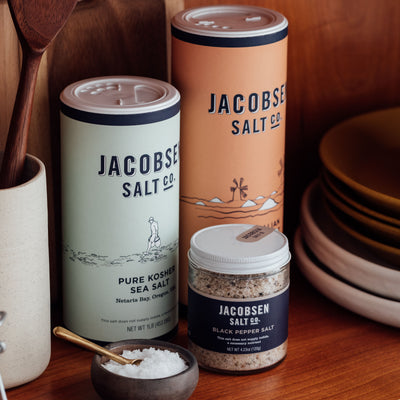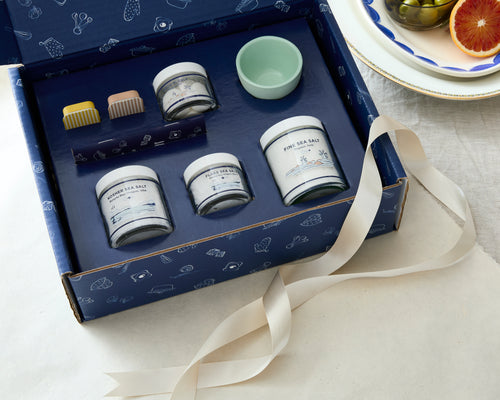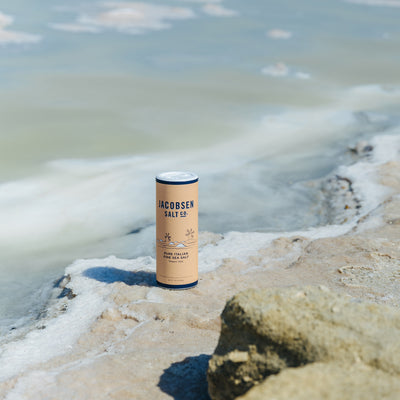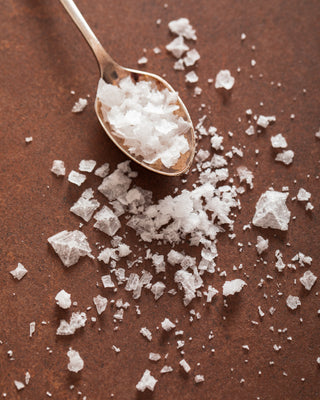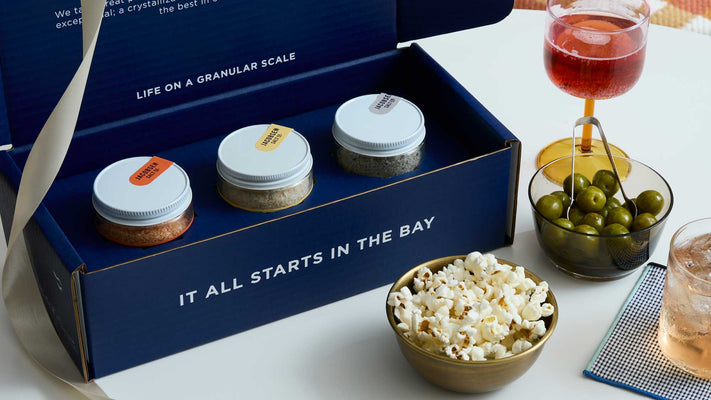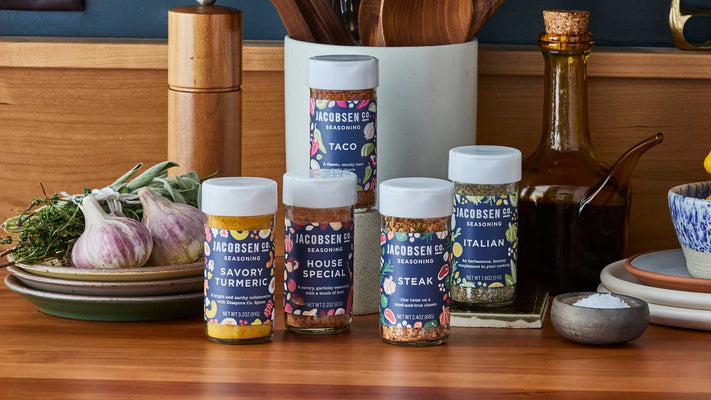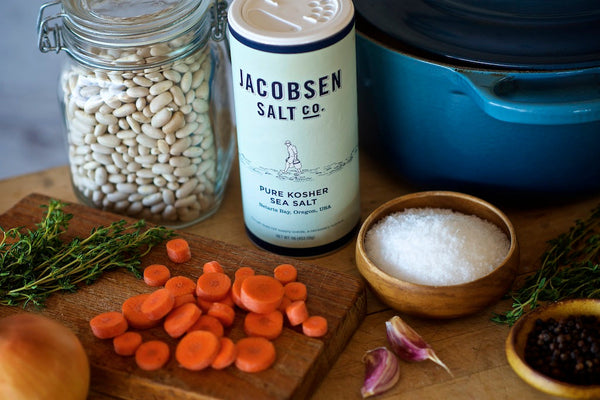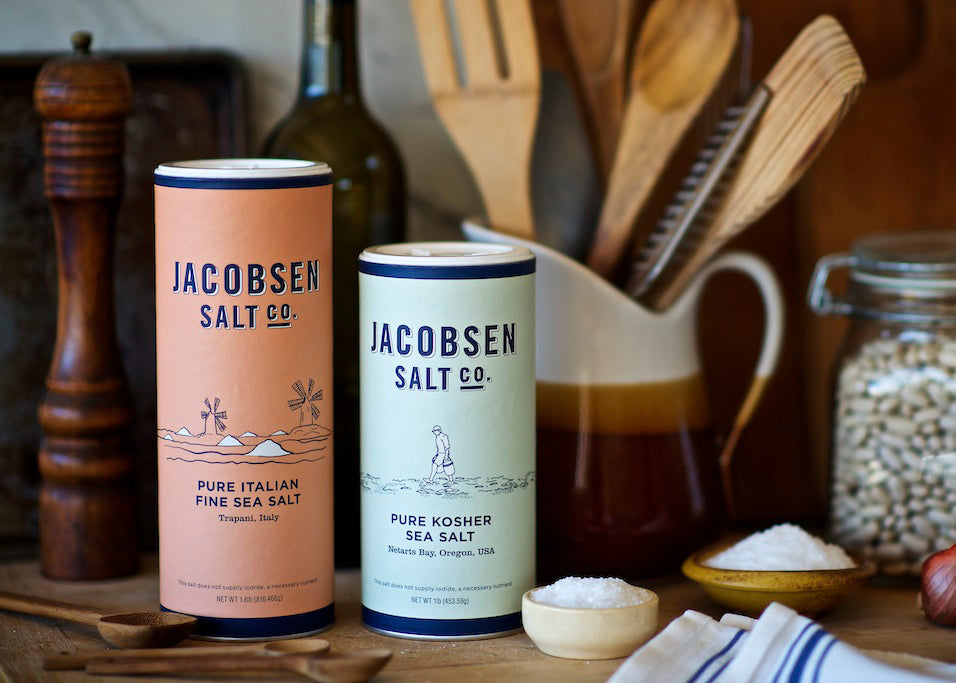
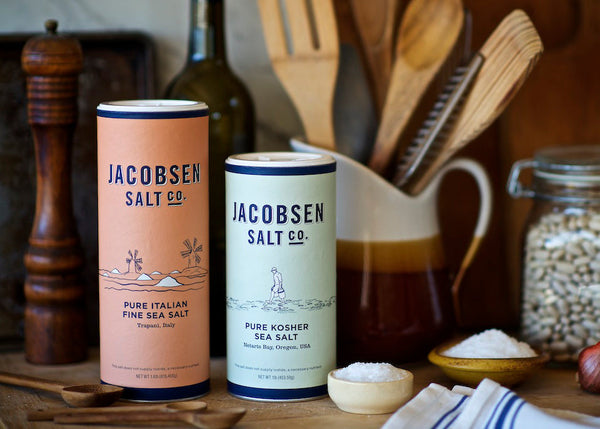
Table Salt Versus Kosher Salt: What is the Difference?
Posted by:
Jacobsen Salt Co.
Posted on:
Jul 23, 2025
Not sure where to start? Our Starter Kit is a curated collection of our most beloved salts paired with a helpful guide full of insights, techniques, and tools to help kickstart your kitchen exploration.
Salt is a fundamental cooking ingredient, essential for enhancing flavor and preserving food. Kosher salt and table salt are two of the most common types yet they are distinct. Though both are primarily sodium chloride (NaCl), their differences in crystal structure, production and additives significantly impact their culinary uses.
Table Salt
Table salt is the most widely used household salt. It's highly refined and typically sourced from underground deposits. Table salt’s crystal structure is very fine, uniform and cube-shaped.
Table salt is usually 99.9% pure sodium chloride, however, it commonly contains two main additives: iodine and anti-caking agents.
Iodine, added as potassium iodide or iodate, fortifies the salt to prevent iodine deficiency, a public health initiative since the 1920s. Some people find it imparts a slight metallic or bitter aftertaste.
Anti-caking agents like calcium silicate are included to prevent the fine grains from clumping, ensuring the salt flows freely from shakers.
Table salt is ideal for baking and seasoning liquids, as the fine grain dissolves easily and uniformly. It is also ideal for decanting into salt shakers, as the small grain size ensures it fits through the shaker.
Is Our Fine Sea Salt the Same As Table Salt?
While similar in grain size, our Pure Fine Sea Salt is free of any additives that might impart a bitter taste or impact the preserving process. Use it exactly as you would table salt for cooking, baking, seasoning or in place of pickling salt.

Kosher Salt
Kosher salt earned its name from its use in the koshering process, a Jewish tradition of drawing blood from meat. Its larger, coarse crystals are particularly effective for this.
When seasoning and dry brining, the larger flakes are easy to pinch and sprinkle, offering better tactile control and more even distribution. The larger crystals adhere well to the surface of meat and vegetables, effectively drawing out moisture and contributing to juicier, more flavorful results.

A key characteristic of our Pure Kosher Sea Salt is the absence of iodine and anti-caking agents, resulting in a clean, bright, and briny taste. Its purity is also beneficial for curing.
Key Differences and Their Impact
Crystal Structure and Size
Table Salt Crystals
- small
- uniform
- dense
Kosher Salt Crystals
- larger
- irregular
- light and flaky
Volume Versus Weight
- A teaspoon of kosher salt weighs less and contains less sodium than a teaspoon of table salt due to air pockets between its larger crystals.
- If a recipe calls for kosher salt by volume, substituting an equal volume of table salt will make the dish much saltier. Measuring salt by weight is always most accurate.
Dissolution Rate
- Both salts are fundamentally sodium chloride, so nutritionally, an equal weight contains the same amount of sodium. The choice between them often comes down to taste preference, desired texture, and the specific culinary application.
- Table salt dissolves quickly
- Kosher salt dissolves more slowly, which can be desirable for textural crunch or a lingering saltiness.

Making the Right Choice
Understanding these differences helps in the kitchen:
- For baking and precise liquid seasoning: Fine sea salt is generally more reliable due to its consistent grain size and rapid dissolution.
- For everyday cooking, seasoning by hand and finishing dishes: use kosher salt for its ease of use, clean taste, and textural contribution.
- For brining and curing: Kosher salt is typically recommended.

